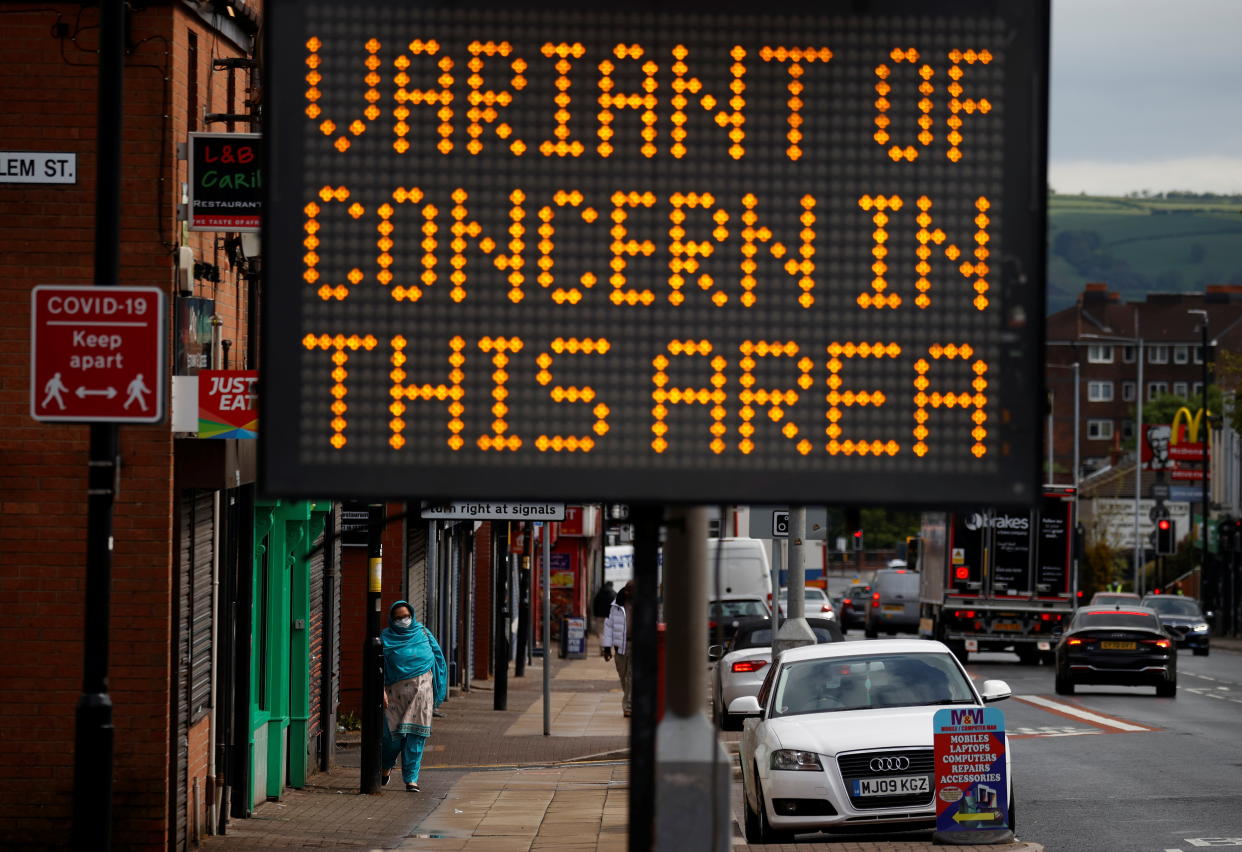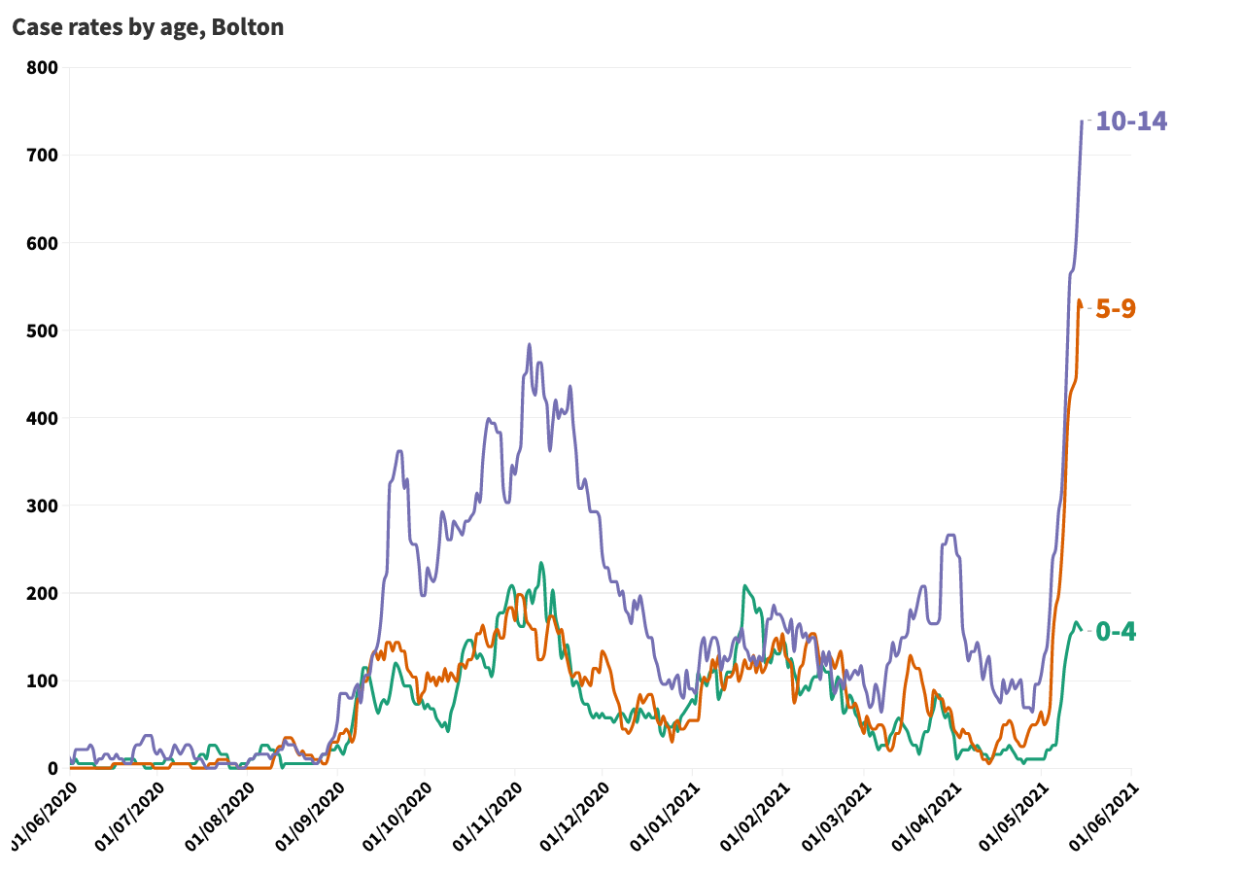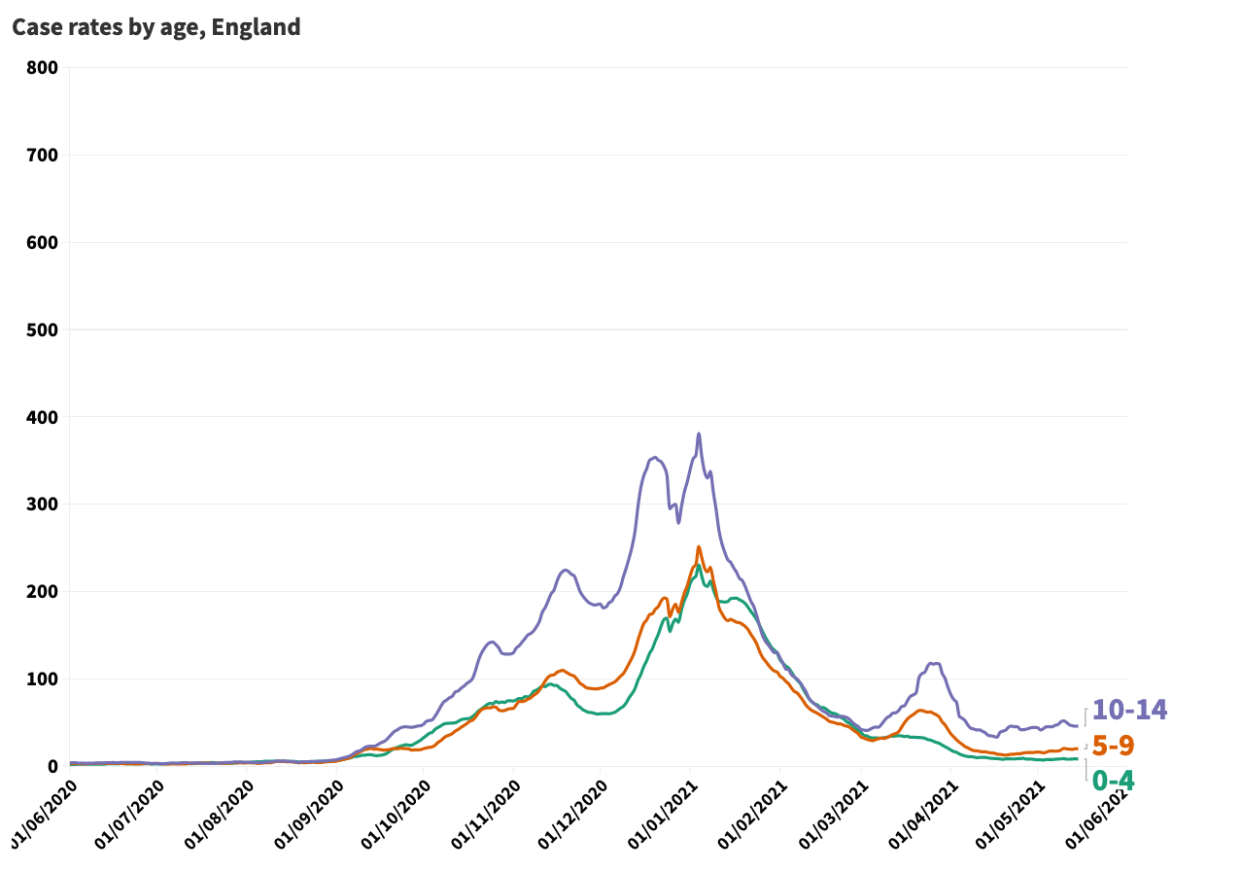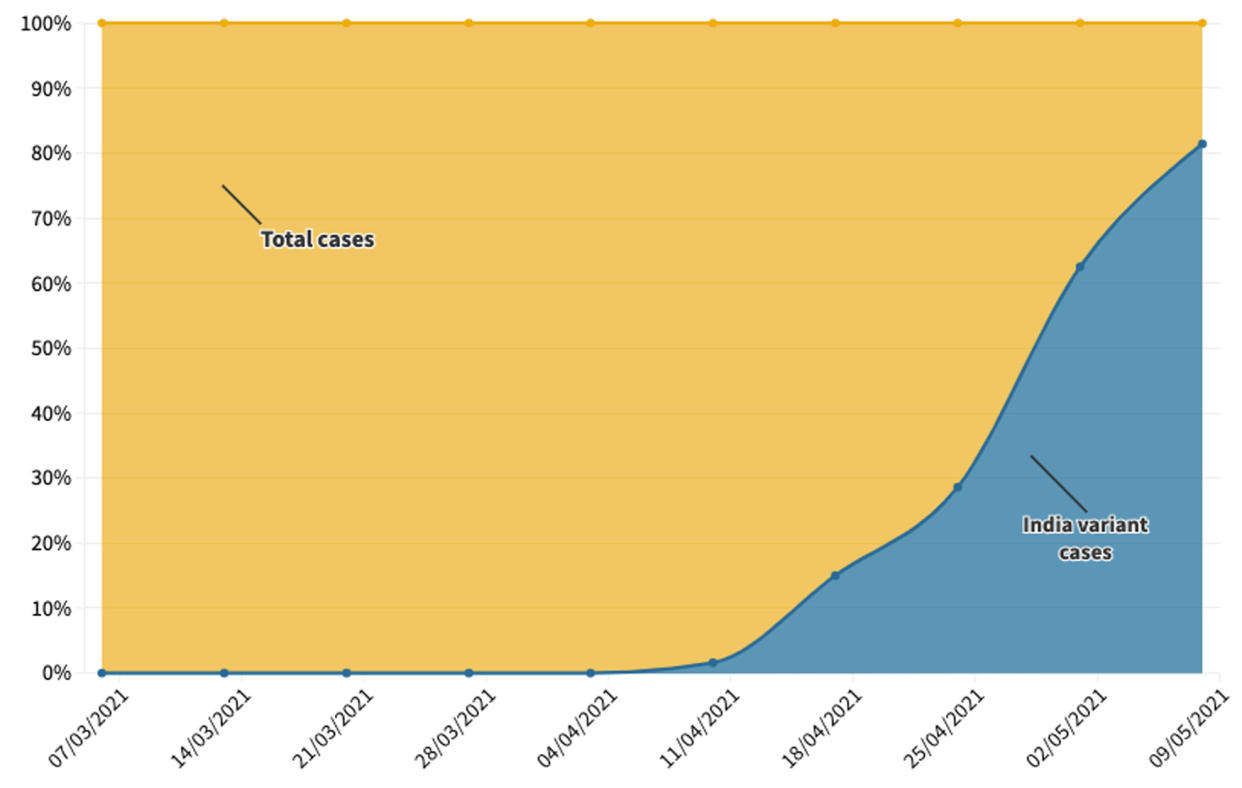Schoolchildren in Indian variant hotspot 27 times more likely to test positive for COVID

Primary school children in Bolton are currently 27 times more likely to catch coronavirus than in the rest of England amid the spread of the Indian variant.
Bolton is the country’s number one hotspot for COVID-19 infections, which is mainly being driven by cases involving the B.1.617.2 variant of the virus.
Government data show school-age children have been disproportionately affected in Bolton, though this could also be linked to the introduction of surge testing in the area in response to the variant.
Among five to nine-year-olds in the seven days up to 15 May, there were 525 infections when measured per 100,000 people. This is 27 times higher than England as a whole, which has a case rate of 19.8 per 100,000 for this age group.
There is also a much higher case rate in the next age group of 10 to 14-year-olds: 740 per 100,000 in Bolton, compared to 46 per 100,000 in England. This is 16 times higher.
Those differing rates are illustrated in the following two charts...


Children face an extremely small risk of becoming seriously ill through COVID infection. This was a key principle behind the government reopening schools in the first stage of its unlocking “road map” on 8 March.
Public Health England announced on Thursday there had been 3,424 confirmed B.1.617.2 cases in the UK, up 2,111 from 1,313 a week before.
The high case rates among school-age children in Bolton in particular have led to experts from the Independent Sage group, which scrutinises government COVID policy, to call for measures to make schools safer as the variant spreads across the country.
Watch: Government has 'increasing confidence' vaccines effective against Indian variant (from Wednesday)
Prof Christina Pagel, from the group, said on Thursday “it's not fine to accept such high rates in children just because very few need hospital”.
She pointed to the disruption of pupils’ education through needing to self-isolate, as well as “long COVID” affecting about one in 10 people.
Dr Zubaida Haque, another member of the committee, has also called for the government to reinstate face masks in secondary school classrooms.
Read more: 'Early signs’ of possible increase in COVID cases, new official figures reveal

In a report published in The Lancet journal in March, the use of face masks, as well as measures such as opening classroom windows and doors, were identified as ways to make schools safer.
Meanwhile, government data shows case rates are much lower in older age groups in Bolton.
In the 80 to 84 category, for example, it was 14.9 cases per 100,000. People aged 80 and over were among the first to be offered vaccines in the UK.
Read more: What we know about the 'triple mutant Yorkshire variant'
There has been positive news this week about the effectiveness of vaccines against the B.1.617.2 variant, and COVID modeller Dr Duncan Robertson told Yahoo News UK it is hoped older age groups in Bolton, having been offered a vaccine, won’t experience the high case rates currently seen in the younger age brackets.
He said: “The rates for older people are certainly going up slower than they are for younger people.
“What we hope, and to some extent expect, is for that not to transfer up to the older more vulnerable age groups.”
Watch: What is long COVID?



